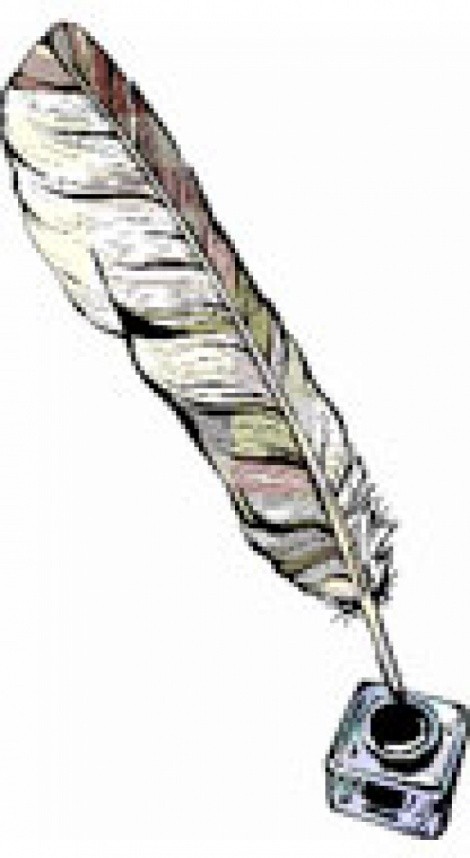
If it was indeed fashionable for men to wear hats in Salt Lake City in the 1950s, the practice didn’t carry over to their kids. A baseball hat was what you wore with your little-league uniform. A coonskin cap was what you wore when you played Davy Crockett, defending a backyard Alamo. A hat with fur earmuffs was what you wore in the winter. The rest of the time, we kids were hatless. I doubt our hatlessness was an act of rebellion or a manifestation of emerging adolescent identity. I simply found hats uncomfortable. In high school, when I landed a part-time job with Hank the Petunia King, Salt Lake City’s premier nurseryman, the boss told me I should arrive at work with boots on my feet, a knife in my pocket and a hat on my head. I bought boots at Sears and carried my Boy Scout pocketknife. But I never wore a hat.
nMy father wore his fedora high on his forehead, the brim turned up more in the style of Harry Truman than Eliot Ness. A turned-down brim betokened a man of action like Indiana Jones, Clark Kent or Sam Spade. My father was not in that league. His skills, while hardly commonplace, seemed to me unremarkable. I was slow to appreciate his ability with a violin, a tennis racquet and a typewriter. And slow to recognize the ethos of the upturned brim.
nThe men of the greatest generation were mindful of hat etiquette. They didn’t wear hats indoors, and when the national anthem was played, they doffed their hats and pressed them to their chests. Tipping one’s hat to greet a woman on the street may have been customary, but I never saw my father do it. Nor did he use “doff,” a verb as dated as hat etiquette itself.
nOnly in the military are those rules of etiquette intact. I was forced to learn them after being dragooned into the Army. Soldiers were issued a variety of hats, caps and helmets. Some were formal; some, utilitarian. A few rules applied to all. Wearing a hat indoors was proscribed. The only exception was if you were “under arms”—that is to say, carrying a weapon. If you had an M-16 or a .45, your hat stayed on.
nI invoked that exception just once. I was the duty officer on my appointed rounds with an unloaded pistol on my hip. I walked into the officers’ club about midnight wearing my hat. My entrance set a gong to clanging in the bar. I had violated the no-hats-in-the-bar tradition, declared a clutch of inebriates gleefully, and I was therefore subject to the traditional sanction, to buy a round of drinks. I protested. That I was under arms obligated me to keep my hat on, I explained. They hooted. Outranked and outnumbered, I finally paid for their drinks and left.
nI left the Army a few years later. I told my friends I had grown tired of wearing hats all the time. There were other reasons, of course, and since then, I have been obliged to wear other hats. I wore a hard hat for a while and a mortarboard two or three times. I bought a hat to wear inside Hindu temples. Now, I wear a helmet when I ride a bike. I still don’t like hats. Nevertheless, all these years later, I’m surprised how much of that cumulative hat experience survives in my subconscious. Hat etiquette lies there as dormant as prejudice, stirring unexpectedly whenever I see a hat-wearing dolt in a restaurant or theater. “What in the hell is he thinking?” I say to my wife, a la Jon Stewart. Encounters with adults wearing baseball hats backwards leave me muttering. I expect that others my age may have a similar reaction to tweens whose bra straps are on display. Bra straps don’t offend me nor do boys in flat-billed, hip-hopper hats cocked sideways. The latter bring a smile. Golleee! Wasn’t it Gomer Pyle who trademarked the cocked hat?
nI still have one of my father’s hats. It’s a straw boater. The flat-topped, stiff-brimmed, white hat you wear to garden parties where you play croquet and drink gin-and-tonic in tall glasses. I wore it once to a summer wedding under a white tent. In the mirror, I cut a dashing figure in boater, blazer and bowtie. At the wedding, I have no doubt that at least one guy leaned over to his wife and whispered, “What in the hell is he thinking?”
nWhat I’m thinking is that each of us is a walking hat trick, a composite of who we are, who we think we are, and who others think we are. (Isn’t it likely that Sen. Chris Buttars thinks himself a victim?) I concede the right to wear a hat brim-up or brim-down, to wear a baseball hat indoors. However, there’s an irrepressible part of me, long in the making, that regards an undoffed hat in a restaurant or classroom as the mark of a guy who never served in uniform and never learned good manners.
nPrivate Eye will return next week. Send feedback to comments@slweekly.com.
n